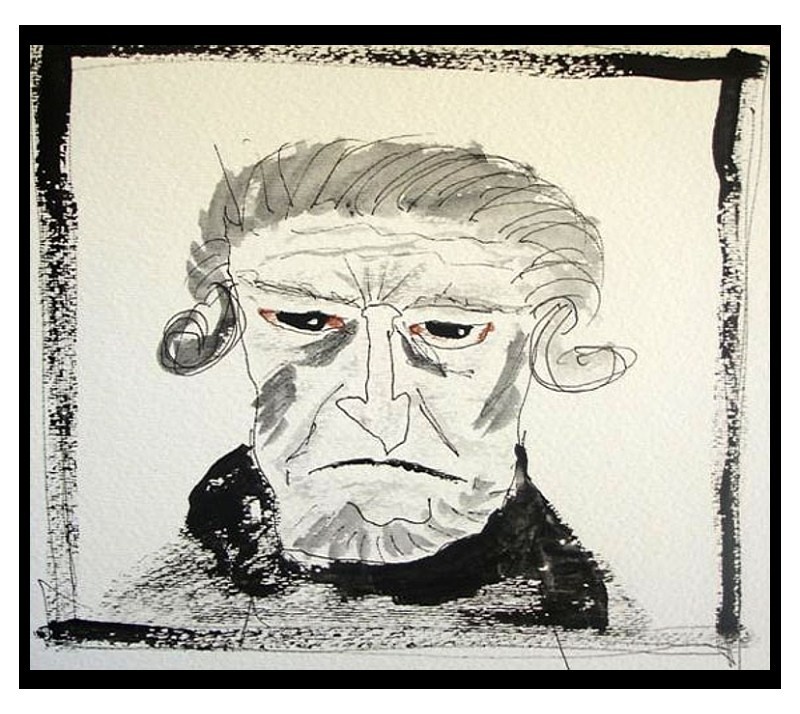At some point in its history, Charles Dickens' 'A Christmas Carol' stopped being just a book and became a Christmas experience, a force of its own, bridging 1843 London to a 2011 Christmas morning through, not just its words, but its spirit.
How does one convey the feeling of the past in the language of the present? This was the challenge Jesse Kornbluth and Paige Peterson took on when revamping the Christmas classic 'A Christmas Carol' to bring children suspense, heartbreak and joy instead of... well, boredom.
'A Christmas Carol' tells the tale of miserable miser Ebenezer Scrooge who hates Christmas. Scrooge undergoes a transformation, however, when he is visited by three ghosts who guide Scrooge through his past, present and shadows of a possible future to illuminate the pain and suffering Scrooge has perpetuated. In the end Scrooge grows to embody the spirit of Christmas, but before that, the story is downright petrifying.

To deliver Dickens' story to a modern day audience, Kornbluth did a little bit of trimming, shedding the story's excess weight and brushing off its outdated dust. The result delivers the same Christmas magic as the classic original, but in a manner today's youth can sit through.
Illustrator Paige Peterson provides imagery that haunts more than it coddles. Simple, expressive figures create burrow into the reader's memory with the power of a well-crafted plot. The illustrations do not just accompany the text, they drive it, they bring it to life.
The new 'Carol' is composed of words and images that don't hold your hand but throw you into the imaginary world Dickens carved out so many years ago. Not simply a translation but a masterful adaptation, Kornbluth and Peterson's 'Christmas Carol' will warm your heart and haunt your dreams. The modified classic will provide a scary Christmas.
Illustrator Peterson described her process in crafting her haunting visual language:
"We've come to think of "A Christmas Carol" as a heartwarming story, but that's because of the image we want to take away from it. You know, the final image in the movie and theater versions. A happy ending --- Scrooge reunited with his family, Tiny Tim saved, "God bless us, every one."
But "A Christmas Carol" is, right until the ending, more like a horror movie.
Consider everything that happens before Scrooge's redemption. He turns away requests for charity. He complains about his clerk's one-day-a-year-off-with-pay. He wishes the poor dead. He hates everyone who crosses his path.
And then he pays for his miserliness and misanthropy.
Ghosts appear. They take him on a tour of his miserable life: his lonely childhood, lost opportunities for friendship and love, the terrible fate that awaits Tiny Tim, the eternal damnation in store for him.These are terrifying images. I knew that parents would be reading this story to their kids --- and older kids would be reading it by themselves --- --- but as I set out to create the illustrations for Jesse Kornbluth's e-book of A Christmas Carol, there was no way around it.
I had to go for scary.
I started by going to the Morgan Library in New York --- to celebrate the 200th year of Dickens' birth, the library has a terrific exhibition of his manuscripts, letters and book illustrations on display until February 12, 2012 --- to see the images in the original edition. Printing art wasn't simple in 1843, so I wasn't surprised to find that John Leech (1817-1864) did only 8 illustrations, four in black-and-white and four hand-colored plates. (Because I wanted to stay in the time of Dickens, I kept away from the Arthur Rackham images in the 1915 edition.)
At the library, I took pen to paper and began redrawing the Leech illustrations. These were quick, rough sketches. But that's the feeling I wanted --- not Merrie England, but raw, cold, toxic London. Then I went home and began to paint.
As I worked, certain words stayed with me. Dark. Mysterious. Stark. Bleak. Harsh. Unfair. I remembered other books by Dickens, and I thought about the English class system and the terrible living conditions of the poor. I thought of Dickens, as a child, forced to work in a factory.
And I thought of Ebenezer Scrooge. Yes, he was angry. Yes, he had no compassion or empathy. But he wasn't born mean. He learned it. Meanness was a front for the wounded child that he had been and, really, still was. I thought of the horrible afterlife of Scrooge's dead partner, Jacob Marley. And of the scariest thing of all --- what lay ahead for Scrooge if he didn't change."
Look through the following slideshow of Peterson's illustrations, with her commentary on their process and comparison to John Leech's original illustrations.
